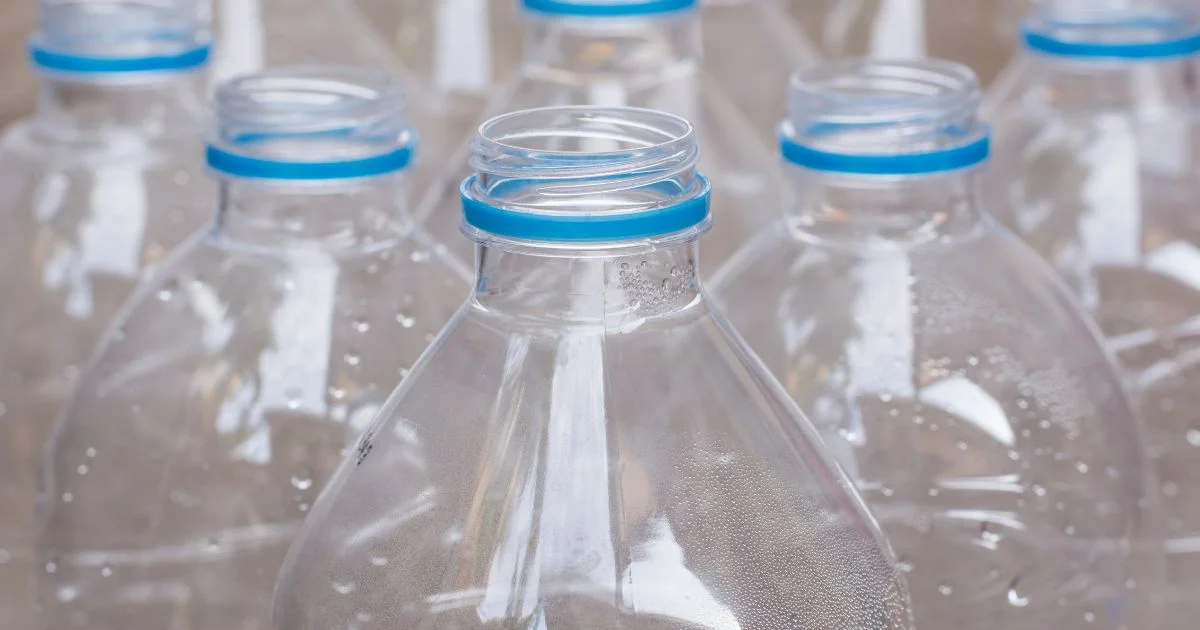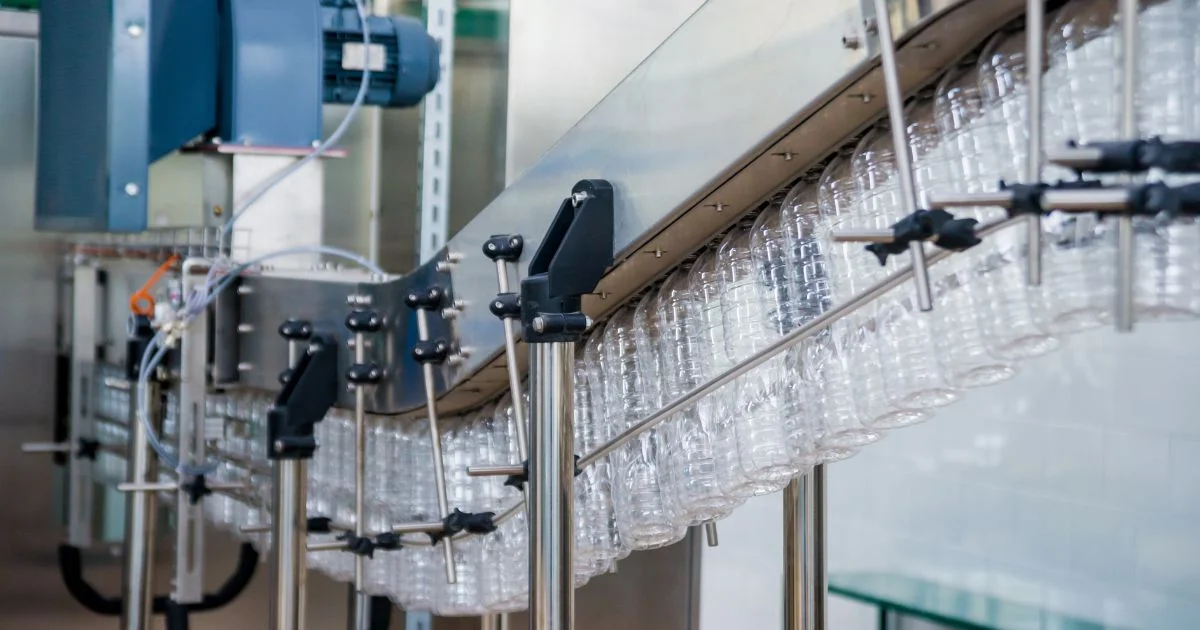
That quality issue that won't go away? The one where products come off the line with spots, streaks, or moisture that shouldn't be there? It's probably not your coating process or your washing equipment. More often than not, it's your industrial drying or blow-off process that's letting you down.
When drying processes aren't working efficiently, the problems compound fast. Production slows down, reject rates climb, and you're burning through energy without getting the results you need. But here's the thing most people miss – inefficient blow-off systems don't just waste energy. They create downstream problems that ripple through your entire operation.
Plants often underestimate the total cost of underperforming drying systems. You'll learn to spot the warning signs early, understand what's really causing the inefficiency, and discover practical solutions that can turn your process into a competitive advantage.
Energy Bills That Don't Make Sense
Your compressed air system is working overtime, but your drying results haven't improved. That's usually the first red flag. Compressed air systems are expensive to run – significantly more expensive than blower-driven air for the same volume. If your energy costs keep climbing while your throughput stays flat, you're dealing with an inefficient blow-off design.
Traditional compressed air systems lose efficiency through leaks, pressure drops, and the simple physics of compression. Every PSI lost through worn fittings or undersized piping forces your compressor to work harder. Meanwhile, your drying performance actually gets worse. It's frustrating when you're spending more to get less.
Direct drive blower systems use a fraction of the energy because they don't compress air – they just move it efficiently. The motor shaft connects directly to the impeller, eliminating energy losses from belts, pulleys, and compression cycles.
From hundreds of installations, this approach typically delivers substantial energy savings while improving drying performance. That's not just efficiency – that's smart engineering.
The math is straightforward once you dig into it. Compressed air costs significantly more per cubic foot than blower air. Scale that across three shifts, and the savings add up fast.
Inconsistent Results Across Your Production Line
When some products come out perfectly dry while others still carry moisture or debris, your blow-off system isn't delivering consistent airflow. This happens when nozzles are sized wrong, positioned incorrectly, or when your air pressure fluctuates during production cycles.
Basic nozzles don't cut it anymore for precision drying. They create turbulent airflow that wastes energy and leaves dead spots where moisture hides. Think of it like watering your garden with a broken sprinkler – you get some areas soaked while others stay dry, no matter how much water pressure you use.
Air knives generate a continuous, laminar sheet of high-velocity air that covers surfaces evenly. You can customize lengths from 6 inches to over 240 inches, and the adjustable orifice lets you fine-tune airflow for different products. The key is matching your airflow pattern to your product geometry.
Here's where most people go wrong – they assume more pressure equals better results. But turbulent air creates pockets where contaminants can hide. Laminar flow sweeps everything away cleanly, using less energy in the process.
Maintenance Headaches That Keep Getting Worse
Belt-driven blowers break down at the worst possible times. Belts stretch, slip, and snap. Pulleys wear out and create vibration. Bearings fail from misalignment. If you're constantly replacing belts or dealing with unexpected breakdowns, your blow-off system is costing you more than just maintenance dollars.
Here's what works best: direct drive systems eliminate most of these failure points. No belts means no belt maintenance. No pulleys means no alignment issues. The motor shaft connects directly to the impeller, so there's less vibration and fewer moving parts to maintain.
This isn't just about convenience – it's about reliability. When your drying system goes down, your entire line stops. Direct drive blowers typically run for years without major maintenance, and when they do need service, it's usually just routine motor maintenance that can be scheduled during planned downtime.
Plants often stock spare belts due to frequent failures. Direct drive systems eliminate this maintenance requirement entirely. That's the kind of reliability that lets you focus on production instead of repairs.
Production Bottlenecks at the Drying Station
Your drying station has become the slowest part of your line, and increasing line speed just makes the problem worse. This happens when your blow-off system can't keep up with production demands, forcing you to slow everything down or accept poor drying results.
The solution isn't always more air – it's better air delivery. Air cannon nozzles create targeted, high-velocity blasts that can remove moisture from tight spaces and complex geometries. They're available in standard sizes from 2 to 8 inches, and you can add accelerator inserts to increase range and velocity for specific applications.
For continuous processes, heated blow-off systems reduce drying time by adding controlled heat from electric, gas, or steam sources. The combination of heat and high-velocity air evaporates moisture faster than air alone, letting you maintain line speeds without compromising quality.
Sometimes the bottleneck isn't obvious until you really analyze the process. Parts might look dry but still carry microscopic moisture that causes problems downstream. That's when you need precision drying that gets into every crevice and corner.

Static Electricity Problems That Affect Quality
Dust and debris keep sticking to your products after the blow-off process, creating quality issues and customer complaints. Static electricity builds up during high-speed production, and standard blow-off systems can make it worse by creating more static charge.
Static control systems integrate ionizing bars with air knives to neutralize charge while removing contaminants. The ionized air eliminates static buildup, so particles don't get attracted back to the surface after you've blown them off. This is particularly important in electronics manufacturing, bottling operations, and anywhere you're handling plastic materials.
Without proper static control, you're fighting physics. No matter how much air you use, charged particles will find their way back to charged surfaces. The solution is treating the cause – the static charge – not just the symptoms.
Electronics manufacturers know this problem well. You can blow a circuit board perfectly clean, but if it's still carrying a charge, dust will settle right back onto it before it reaches packaging. It's like trying to clean your TV screen with a dry cloth – you just move the dust around.
Poor Performance in Challenging Environments
Your blow-off system works fine in normal conditions but struggles when humidity is high, temperatures fluctuate, or you're dealing with different product materials. Environmental factors expose weaknesses in system design that might not show up during initial testing.
Corrosion-resistant materials and non-sparking designs become critical in harsh environments. Stainless steel air knives and aluminum housings resist chemical damage and maintain performance over time.
The key is designing for your actual operating conditions, not ideal laboratory conditions. Real-world installations face temperature swings, humidity changes, and contamination that can overwhelm systems designed for perfect environments.
Systems that work well during commissioning can fail when seasonal humidity changes aren't accounted for in the design. Extreme weather conditions can turn a marginally sized system into a production nightmare.
When Standard Solutions Don't Work
Complex geometries, multiple product types, or integration challenges require custom engineering that goes beyond off-the-shelf components. If you're trying to make standard nozzles work for non-standard applications, you're probably dealing with compromised performance and higher costs.
Systems developed by companies like Air Force 1 start with understanding your specific requirements – product geometry, line speed, environmental conditions, and quality standards. CAD modeling and airflow analysis help optimize nozzle placement and sizing before installation. This engineering approach eliminates guesswork and ensures your system performs as designed.
Your blow-off system should work with your production process, not against it. When standard solutions create new problems or require constant adjustments, custom engineering delivers better results with lower long-term costs.
Industries with complex part geometries and tight quality requirements often find that generic solutions don't work. Every application needs thoughtful engineering to get the results you're after.
The Real Cost of Inefficiency
Inefficient industrial drying processes cost more than just energy and maintenance. They create quality problems, slow production, and force you to work around system limitations instead of optimizing your entire operation. The hidden costs – increased reject rates, customer complaints, and lost productivity – often exceed the obvious expenses.
Efficient blow-off systems don't just remove moisture and debris. They integrate with your production flow, reduce energy consumption, and deliver consistent results that let you optimize line speeds and quality standards. The investment in better equipment pays back through reduced operating costs and improved product quality.
Here's what really matters: a properly designed drying system becomes invisible. You don't think about it because it just works. The best systems integrate seamlessly with existing production workflows, requiring minimal operator intervention while consistently delivering the precise drying performance your quality standards demand. That's when you know you've got it right.
Ready to eliminate those inefficiencies? Start by evaluating your current system's energy consumption, maintenance requirements, and actual drying performance. Then explore custom solutions that address your specific challenges rather than forcing generic fixes onto unique problems.
What's the biggest bottleneck in your current drying process?

